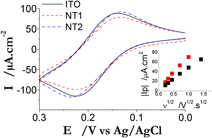Crossref Citations
This article has been cited by the following publications. This list is generated based on data provided by
Crossref.
Määttänen, Anni
Ihalainen, Petri
Törngren, Björn
Rosqvist, Emil
Pesonen, Markus
and
Peltonen, Jouko
2016.
Hierarchically structured self-supported latex films for flexible and semi-transparent electronics.
Applied Surface Science,
Vol. 364,
Issue. ,
p.
37.
Ha, Bonhee
and
Jo, Sungjin
2016.
Development of Ag Nanowire Patterning Process Using Sacrificial Layer.
Journal of the Korean Institute of Electrical and Electronic Material Engineers,
Vol. 29,
Issue. 7,
p.
435.
Hof, F.
and
Pénicaud, A.
2017.
GraphITA.
p.
175.
Wang, Yu
Huang, Kai
Derré, Alain
Puech, Pascal
Rouzière, Stéphan
Launois, Pascale
Castro, Celia
Monthioux, Marc
and
Pénicaud, Alain
2017.
Conductive graphene coatings synthesized from graphenide solutions.
Carbon,
Vol. 121,
Issue. ,
p.
217.
Hof, Ferdinand
Boni, Alessandro
Valenti, Giovanni
Huang, Kai
Paolucci, Francesco
and
Pénicaud, Alain
2017.
From Food Waste to Efficient Bifunctional Nonprecious Electrocatalyst.
Chemistry – A European Journal,
Vol. 23,
Issue. 61,
p.
15283.
Clancy, Adam J.
Bayazit, Mustafa K.
Hodge, Stephen A.
Skipper, Neal T.
Howard, Christopher A.
and
Shaffer, Milo S. P.
2018.
Charged Carbon Nanomaterials: Redox Chemistries of Fullerenes, Carbon Nanotubes, and Graphenes.
Chemical Reviews,
Vol. 118,
Issue. 16,
p.
7363.
Bepete, George
Izard, Nicolas
Torres-Canas, Fernando
Derré, Alain
Sbardelotto, Arthur
Anglaret, Eric
Pénicaud, Alain
and
Drummond, Carlos
2018.
Hydroxide Ions Stabilize Open Carbon Nanotubes in Degassed Water.
ACS Nano,
Vol. 12,
Issue. 8,
p.
8606.
Chao, Jia Feng
Meng, Yong Qiang
Liu, Jing Bing
Zhang, Qian Qian
and
Wang, Hao
2019.
Review on the Synthesis and Antioxidation of Cu Nanowires for Transparent Conductive Electrodes.
Nano,
Vol. 14,
Issue. 04,
p.
1930005.
Hof, Ferdinand
Poggini, Lorenzo
Otero, Edwige
Gobaut, Benoît
Gonidec, Mathieu
Duttine, Mathieu
Rosa, Patrick
Sandre, Olivier
and
Pénicaud, Alain
2022.
Magnetic Ordering in Ultrasmall Potassium Ferrite Nanoparticles Grown on Graphene Nanoflakes.
ACS Applied Materials & Interfaces,
Vol. 14,
Issue. 2,
p.
3130.
Vita Damasceno, João Paulo
Picheau, Emmanuel
Hof, Ferdinand
Zarbin, Aldo J. G.
Pénicaud, Alain
and
Drummond, Carlos
2024.
Influence of Defects and Charges on the Colloidal Stabilization of Graphene in Water.
Chemistry – A European Journal,
Vol. 30,
Issue. 21,
